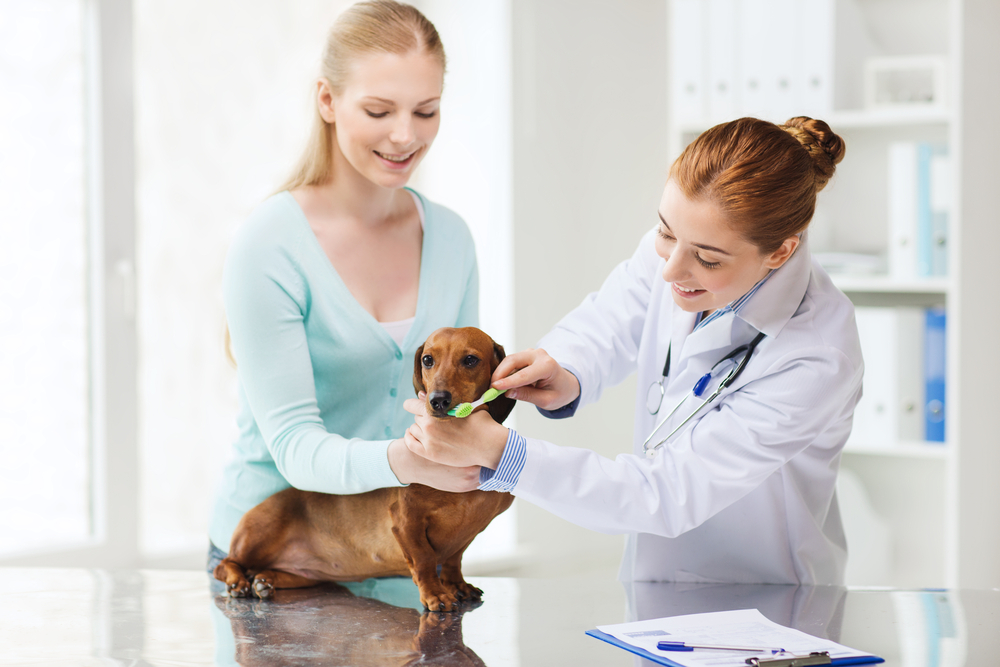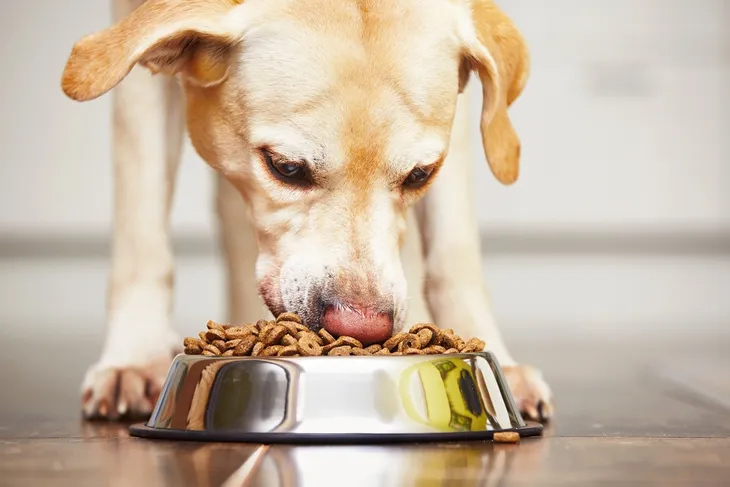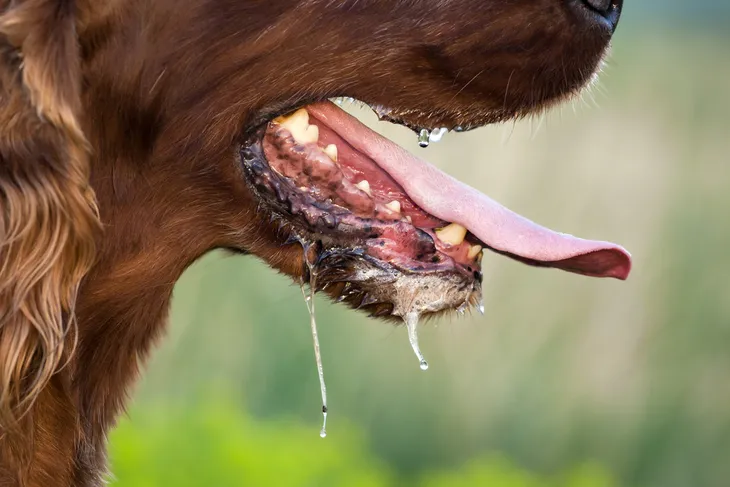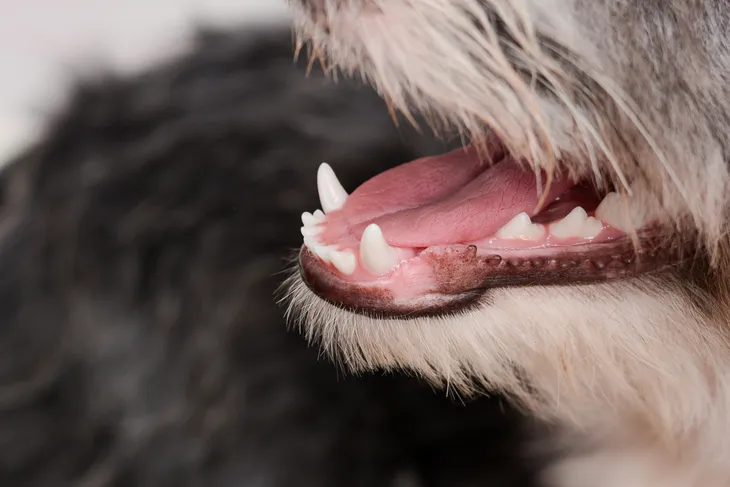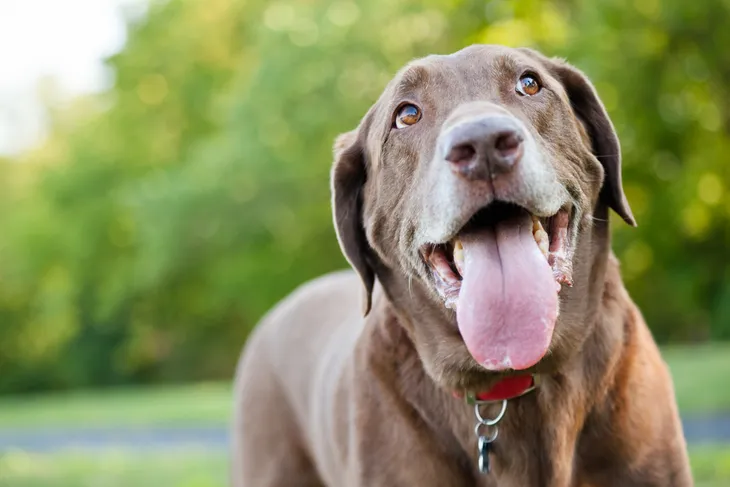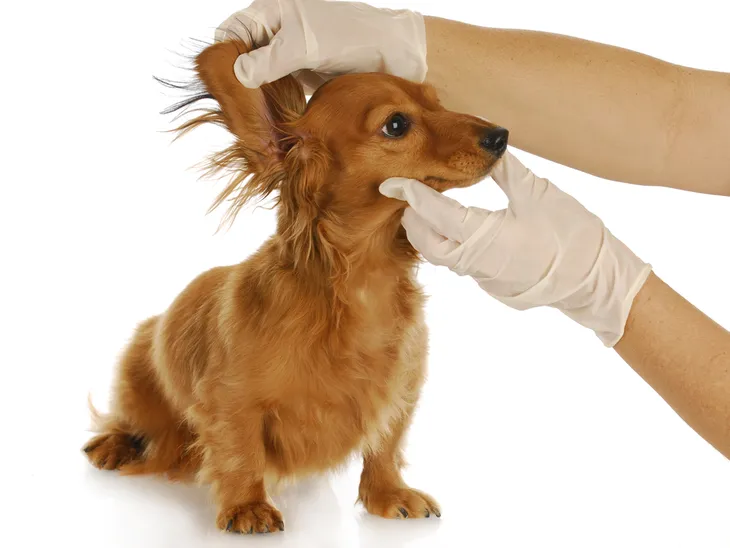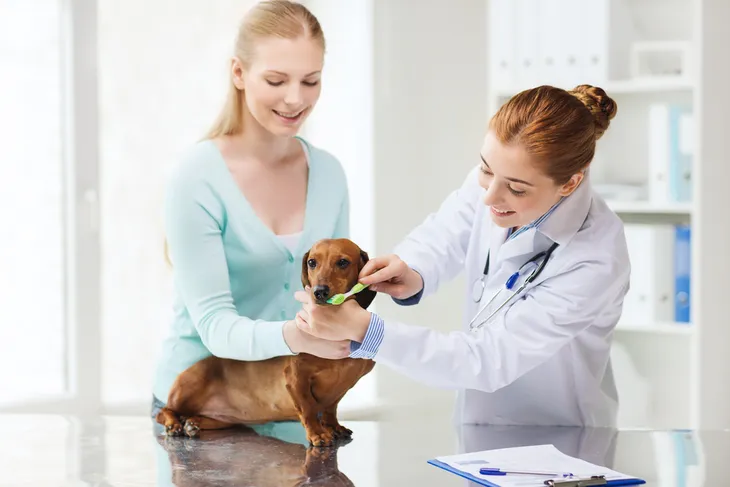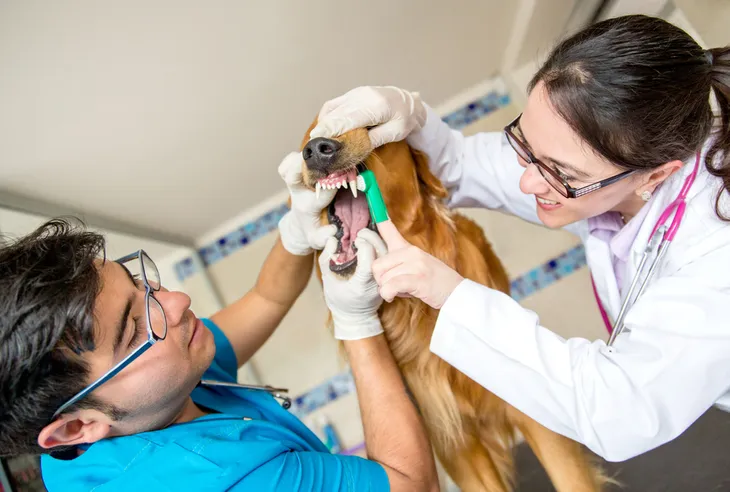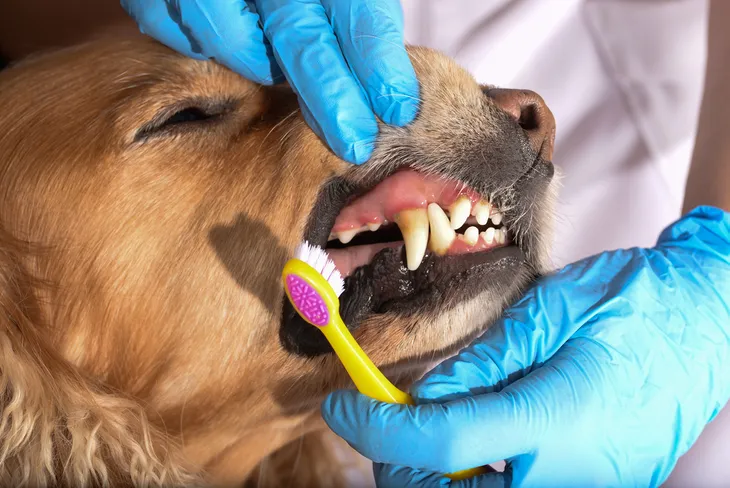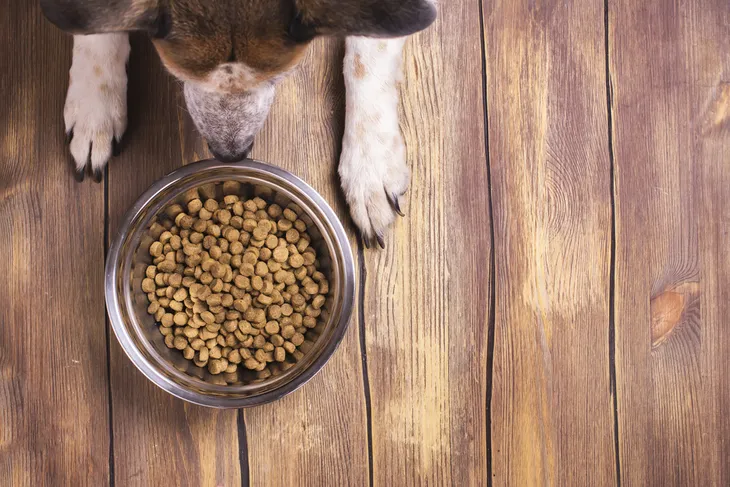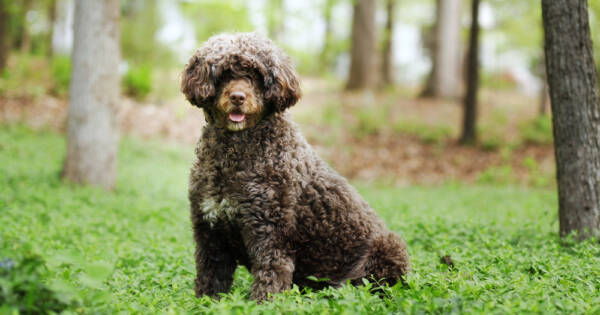Unfortunately, canine dental diseases are very common. As in humans, high levels of plaque can form in dogs’ mouths as the result of trapped food debris, buildups of bacteria, and the presence of other foreign particles.
Plaque, in turn, attracts even more bacteria, which your pet’s immune system recognizes as an intruder. When your dog’s body deploys white blood cells to attack the bacterial buildups, your dog’s teeth and gums also suffer damage. Over time, this damage can lead to the development of dental disease.
Symptoms of Dental Disease in Dogs
The conditions that lead to canine periodontitis are usually asymptomatic in their early stages, showing no visible signs or symptoms. However, as the condition progresses into a more severe stage, it will result in a set of clinical presentations that will include one or more of the following (note: treatment options are listed after the 7 symptoms below):
Symptom: Problems Eating
Dogs with advanced cases of dental disease often have trouble picking up their food when eating. Food may spill out the dog’s mouth as it tries to chew. Your dog may take much longer than normal to eat, or it may start to lose weight because it isn’t eating as much as it needs to.
Another feeding-related symptom of canine dental disease is chewing localized to one side of the mouth. Dogs will try to shield injured teeth and gums by using them as little as possible while eating.
Symptom: Bleeding of the Teeth and/or Gums
Red and bloody gums can signal the presence of dental disease in dogs, since the highly sensitive and worn-down gums are prone to being injured even by regular activities like eating. You may also see blood in your dog’s saliva, and your dog may start to produce long, stringy salivary discharges informally known as “ropes.” Alternately, blood may appear in your dog’s water bowl, or on its chew toys.
Symptom: Loose Teeth
If gum loss is severe enough, your dog may develop loose teeth. Without treatment, or given enough time, affected teeth may even fall out on their own.
Keep in mind that dental disease can be quite painful for dogs. However, dogs instinctively try to hide their pain. This is a leftover remnant of evolutionary history, as wild animals know not to show that they are injured because predators are more likely to attack wounded animals.
Symptom: Halitosis
Chances are your dog’s breath isn’t particularly pleasant, even at the best of times. However, in dogs with dental disease, you’ll notice a strong, intense foul breath odor with a distinctive “rotten” quality. Frontline treatments won’t usually have much of an effect on this chronic form of bad breath, which is known as halitosis. This is because it is systemic in nature, and is caused by bacteria that has taken root deeper in your dog’s body through entry points in its weakened gums.
Symptom: Unusual “Talking” Noises
Dogs with dental disease often make unusual noises, or seem to “talk” by when they open their mouths wide, or when they yawn. This is the result of gum loss, and is an involuntary reaction to air passing through your pet’s wide-open mouth.
This symptom is a sign that your pet’s gum loss has reached an advanced level. While you may find it amusing or funny at first, it is actually a warning that your pet should have its inner mouth examined by a vet.
Symptom: Head Shyness
Dogs with dental disease may react badly to having their heads touched or petted, and will seem to want to avoid contact with their head. This phenomenon, commonly known as “head shyness,” is related to your dog’s natural propensity to try to hide the fact that it is experiencing pain. Rather than emitting a clear pain reaction, your dog will simply move to avoid the contact. If your dog has never before exhibited signs of not wanting its head to be touched or petted, advancing dental disease may be the reason.
Symptom: Nasal Discharge
If your dog’s dental disease is fairly advanced, you may notice that it emits nasal discharges, which may or may not be accompanied by sneezing. This occurs because as canine periodontitis advances, it breaks down the bones that usually separate your pet’s nasal cavity from its oral cavity. In the absence of these bones, there is nothing to prevent the discharge from seeping out your pet’s nose. The more frequent and voluminous the discharge, the more advanced the dental disease usually is.
Treatment of Dental Disease in Dogs
If detected early, the initial stages of canine dental disease may be reversible. However, after a certain point, the damage to your pet’s teeth and gums is irreversible, and your vet will look at management strategies intended to prevent further harm.
To this end, you should understand that veterinarians classify dental disease in dogs in four stages: Stage 1 is mild, and marked simply by redness and inflammation. Stage 2 is slightly more advanced, but involves damage to only the teeth and gums but not the bones. Stage 3 is when bone loss has occurred, but is less than 50 percent. Stage 4 is the most advanced stage, and involves bone loss of 50 percent or more.
Treatment Options: Stage 1
At this mild stage, your dog’s dental disease can be effectively treated with a thorough cleaning of its mouth, above the gum line. This will address buildups of plaque and help remove bacteria from your pet’s mouth, at which time your dog’s natural regenerative capabilities will take over and start healing the surrounding tissues.
It is important that you take your dog to your vet for regular X-rays so the early signs of dental disease can be detected and addressed before they advance. You should also brush your pet’s teeth regularly, and feed your pet treats that are specially formulated to promote healthy teeth and gums.
Treatment Options: Stage 2
At this stage, the bone structures in your pet’s mouth are still largely unaffected by dental disease. A more thorough cleaning will be prescribed, with the surrounding tooth roots and gum tissues also being carefully and thoroughly cleansed with a specialized gel. This gel will encourage your dog’s receding gums to reattach themselves to the exposed tooth roots, which can help undo the existing damage and even help get conditions in your dog’s mouth more or less back to normal.
Treatment Options: Stage 3
Upon reaching Stage 3, it is likely that your dog’s dental problems will not be fully reversible. However, they can still be treated, and there are therapies available that can help your dog grow new gum tissues and even new bones. Prior to applying these regenerative therapies, your vet or canine dentist will open affected gum flaps in your pet’s mouth and clean out the affected areas surrounding the bones and tooth roots.
Treatment Options: Stage 4
Unfortunately, there is very little that can be done to help your dog recover its lost gum tissue and lost bone by Stage 4. At this point, extracting damaged teeth is usually the only available option, as tooth fractures are likely to be occurring. However, in some cases, it may be possible to leave fractured teeth in place, and simply treat them with root canals, just as a dentist would treat a human with the same problem.
Treatment Option: Dietary Changes
Making changes to your dog’s diet can also help promote healthier teeth and gums, and it’s particularly important to implement dietary interventions if your dog has been diagnosed with Stage 1 or Stage 2 dental disease. Switch to a high-quality dog food that is low in sugars and simple carbohydrates, as these substances promote plaque buildup and bacterial growth, since they are a ready supply of food for bacteria.
Notably, most popular brands of commercially prepared pet food are very high in these substances. Some are made up of as much as 40 percent sugar and simple carbs, so switching to a better option may be the ticket to a healthier pet.
